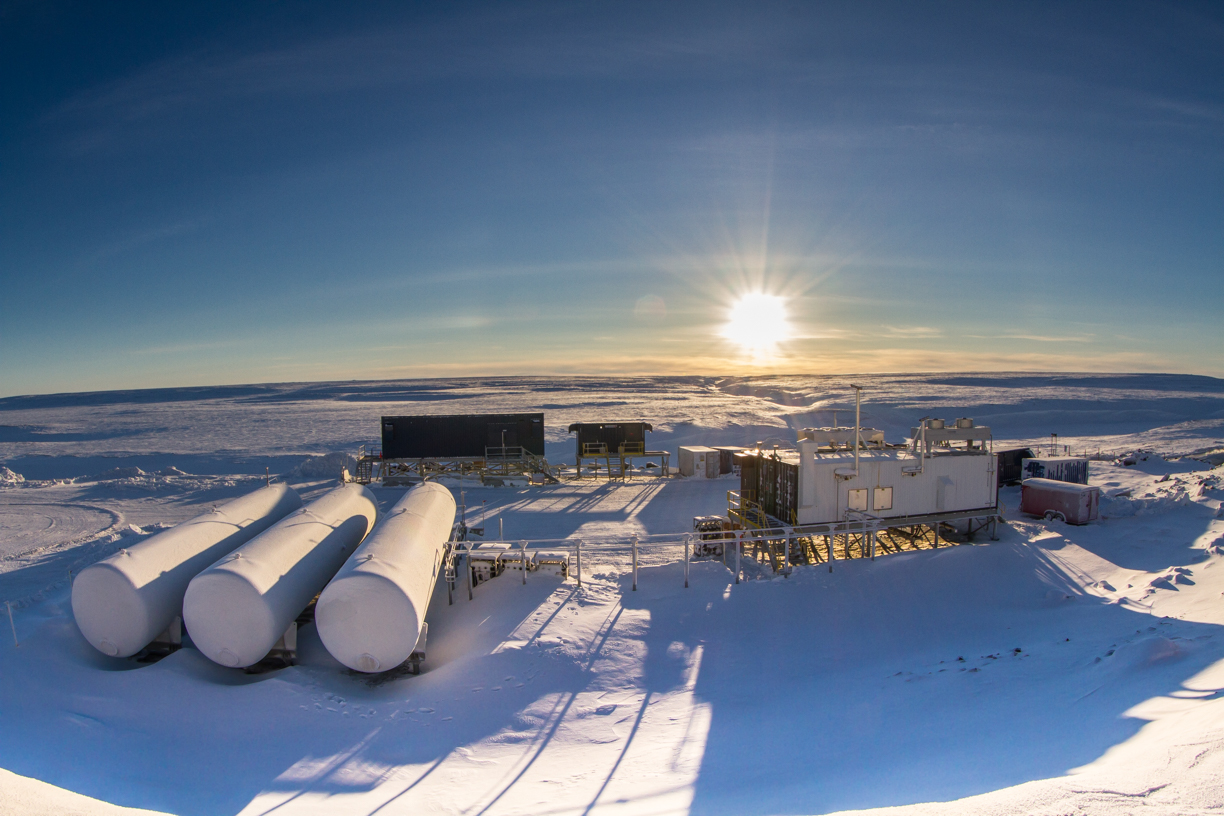Glencore RAGLAN Mine Renewable Electricity Smart-Grid Pilot Demonstration
Lead Proponent: TUGLIQ ENERGY Co.
Location: Nunavik, Northern Quebec
ecoEII Contribution: $ 7,800,000
Project Background:
Wind in the Canadian North has had mitigated success in the past. A few wind projects have been installed over the past 30 years. However, they failed to operate after a few years (in some cases months), primarily because the technology was still under development. Conditions in the North can be challenging for rotating machines, and the variable nature of wind makes it difficult to integrate with diesel power plants in adapting to variable community loads. These conditions have resulted in high installation costs coupled with high operation and maintenance costs, and ultimate abandonment of projects. As such, one of the best wind resources regions has largely been left unexploited.
TUGLIQ’s Glencore RAGLAN Mine Renewable Electricity Smart-Grid Pilot Demonstration Project aims to set a new landmark in harvesting wind energy at an industrial scale, in Canada’s North. The Project was awarded $7.8 M from ecoEII to couple leading-edge storage technologies with an Arctic-grade wind turbine, and demonstrate that such a system can operate reliably and achieve significant reductions in diesel consumption.
Results:

Arctic Sunrise on TUGLIQ's Wind Turbine
photo credit Justin Bulota, Copyright © 2016 TUGLIQ
The Project deployed an Arctic-rated 3 MW ENERCON E-82 E4 wind turbine generator. A spider-like steel foundation was engineered for the turbine in order to alleviate potential problems associated with melting of ice lenses in Raglan’s permafrost, should global warming accelerate over the 20-year life cycle of the turbine. The innovative pile-mounted foundation extends structural support well below the permafrost active layer, and elevates the foot of the turbine one meter above ground. Furthermore, the steel-dominant structure reduces the amount of concrete needed for the foundation by 90% – an added benefit because curing times and temperatures of high-load concrete are a problem in the Arctic, as is the high cost of transporting aggregate materials such as sand and cement. Foundation work started in the spring of 2014 and the complete turbine structure was successfully erected by the end of the summer.
Next, the project coupled the turbine to an innovative storage system configured in a three-tiered architecture. The three tiers consist of: a fast transient 200 kW/ 1.5 kWh KTSI GTR-200 flywheel to filter out large wind power variations of short duration; a 200 kW/ 250 kWh Electrovaya SuperPolymer 2.0™ Li-Ion battery to start-up diesel generators or fuel cells for transition backup; and a HYDROGENICS 200 kW/ 1 MWh system (HySTAT™ 60 Electrolyser 315 kW with an HyPMTM XR 198 kW Proton Exchange Membrane (PEM) fuel cell) to minimize the loss of wind energy over longer time periods.
The storage plant and electrical collector grid works were completed in September 2015, and complete project start-up was achieved on December 17th, 2015, with the first 16 kWh of hydrogen electricity produced on that day. A Hatch Microgrid Controller (HμGrid) monitors demand for wind power and variations in supply, and economically dispatches the charge and discharge of the energy storage units, through complex algorithms, to produce a smooth power output that enables high (50%) wind power penetration. Over the first three months after start-up, the system successfully demonstrated the interplay of multiple storage technologies in the smoothing of sudden wind energy loss, adapting to the dips and drops in wind power. The battery and flywheel combination successfully rode-through wind power dips and drops without tripping the security mechanisms of the Raglan diesel micro-grid. The turbine also achieved 97.3% availability since its installation in 2014, displacing 3.4 million liters of diesel and 9,110 tons of greenhouse gases over 18 months.
Benefits to Canada:

Mid-day sun shining on TUGLIQ's Energy storage facilities (hydrogen plant, Battery container and Flywheel)
photo credit Justin Bulota, Copyright © 2016 TUGLIQ
The Project has transformed the energy landscape in the Arctic. Acting as a flagship site for future industrial-scale wind power development in the region, it successfully demonstrates that harvesting wind energy can improve long-term economic stability and energy security, and reduce greenhouse gas emissions and environmental footprint of Canada’s northern mining operations and communities.
Next Steps:
The wind and storage system will be monitored for a minimum of 5 years under the program. A protocol was developed to isolate a section of the 28 MW Raglan micro-grid so that the project can be operated as a self-contained subset (or sub-micro-grid) of the larger micro-grid. Penetration levels as high as 50% will therefore be tested and operated for extensive periods to simulate smaller remote community micro-grids.
Find out more
Page details
- Date modified: